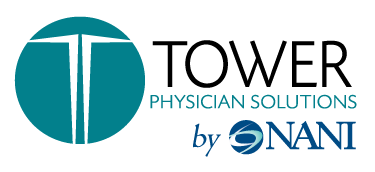
Steps for a Successful Provider's Credentialing
Credentialing issues can be costly and drain productivity, so put in place a plan and keep your credentialing up-to-date. Here are some tips to help ensure you have a successful credentialing process.
Establish the Credentialing Process
Set up a credentialing process for your organization before accepting applications or pre-applications. Establish a written policy describing the process you will use and the information you will need from applicants. The following are standard requests for information:- Current license
- Active Controlled Dangerous Substances (CDS)/ Drug Enforcement Administration (DEA license)
- Evidence of relevant training and experience
- Professional certifications and affiliations
- Proof of recent insurance coverage
- Record of claims and malpractices, if applicable
- Board certification information
After that, it is essential to verify the authenticity of all the above documents with a primary source - the issuing organization to confirm that they are correct and current. Communicate via correspondence, telephone conversation, or online contact. Along with these, you should pay attention to a candidate's current health, references, and criminal history.
Getting Started Early is Key
Although most firms tell you that you have 90 days to start your process and complete it, that time is no longer adequate. It is best to start your process 150 days in advance to allow for unforeseen delays and setbacks. Setbacks may lead to loss of productivity and revenue.Identify Potential Risks
As the credentialing process begins, it's crucial to identify potential risks. Here are some red flags you should keep an eye out for:- The applicant is unwilling to provide all required documentation
- Clinical gaps or coverage gaps
- Sudden lapses in licensure or privileges
- Having short tenures at multiple organizations
- An unusual number or history of investigations or malpractice suits
- Alcoholism/drugs/domestic violence/misconduct history
If any of the warning signs are present in an applicant's history, your organization can take several steps. A follow-up interview might clarify information, or a more formal investigation might be required depending on the degree of severity. Tell the candidate how you plan to proceed either way.
Appoint a Credentialing Coordinator
It makes sense for organizations to have a credentialing coordinator who monitors expiration dates, whether the task is outsourced or handled internally. A timely reminder can ensure that no one's credentialing expires, preventing reimbursements from being denied.Perform a Background Check Early On
Many practices do their own background checks prior to hiring physicians, including confirming their training, employment history, and licensure. It may seem excessive at first, but it can help you avoid hiring a physician only to run into licensing problems time and again. Even more, make sure to double or triple-check any of the documents your new physician will submit.Understand Your State's Regulations
Credentialing laws in your state may differ from those of the other states, and there may be conjoint agreements with payers and other credentialing organizations. Before the physician moves to your practice, the payer may streamline the credentialing for the new job if he has an existing credential with them. Ensure that you are using the rights standards set forth by your state's medical society or Medical Group Management Association.Keep a Digital Archive
Everything piles up when multiple employees submit applications to different insurers, each with a different set of documents required. Furthermore, there will be some credentials that need to be updated later on. This situation is why you should organize all materials into a secured central server.
Learn the Common Errors
In some cases, simple, preventable errors delay the credentialing process. Knowing the common mistakes can be very helpful in order to avoid them. Here are just some of the most frequent oversights and mistakes:- Work history gaps without explanations
- Submitting an expired DEA license or number
- Failure to provide a complete malpractice history
- Professional references are lacking
- Forms not properly filled out
- Data entry mistakes
Monitor the Progress of Each Application
Don't allow applications to fall behind. Ensure that everything moves as quickly as possible. Checking in with insurers about the status of each application until the application is complete means staying on top of the process. Physician credentialing applications are made easier through third-party services that track credential applications.Ask for Peer References
Three peer references, not related to you nor part of your current practice, are recommended from physicians with the same field of expertise. Most importantly, make sure you specify the criteria you wish to apply for peer references clearly to applicants if this is what you intend to do.It's Best to Outsource
A physician credentialing process can be challenging to implement and maintain, but it is imperative to get it right. Thus, we highly recommend outsourcing it to trusted experts to ensure a seamless revenue cycle management that can double your cash flow and secure your bottom line.Partner with Tower Physician Solutions We understand how tedious and time-consuming credentialing is for you. By partnering with Tower PS, you can eliminate mistakes, improve cash flow, and optimize your RCM processes with our provider credentialing services.
Learn More About Credentialing
Learn more at: https://towerps.com

